Representative of contractor Stevenson going over some safety points before entering site
Christos Tsiamis,
EPA Senior Project Manager for the Gowanus Superfund, (right) speaking to members of the EPA Community Advisory Group's Archaeology Committee
EPA's Christos Tsiamis,
suiting up to handle some of the material recently removed fro the Gowanus Canal
For about two weeks, environmental remediation and dredging contractor Sevenson removed all sorts of urban debris that included a sunken boat hull, a smaller fiber glass boat and countless tires.
The debris was transported by barge to a staging area to the Public Place site at Smith Street and Huntington Street. Eventually, it will be transported out of the area via barge to appropriate recycling or waste facilities.
Before shipping the debris off-site, Christos Tsiamis, EPA Senior Project Manager for the Gowanus Superfund, organized a viewing this past Tuesday for members of the press and for the Archaeology Committee of the Gowanus Canal Community Advisory Group.
Accompanied by Natalie Loney, EPA Community Involvement Coordinator, Tsiamis explained to the group that the debris had been neutralized and assessed by an archaeologist, who found that it held "no archeological importance." A full report will be available at the beginning of December.
Since most of the larger items removed from the 4th Street basin broke apart when lifted out of the water, the debris currently stored on Public Place consists of twisted metal and wood. The only recognizable items are an engine and tires.
According to Tsiamis, there really were no big surprises when the material was lifted out of the water,
The larger items had previously been identified and mapped using sonar technology.
"There may be more interesting targets when we come to dredge deeper into the soft material at the bottom of the canal," Tsiamis said.
So there is still a chance that the Gowanus Canal will give up some of its darker secrets and live up to its infamous reputation as the resting place of the Maryland 400, as a notorious mafia dumping ground and home of a revengeful toxic sludge monster.

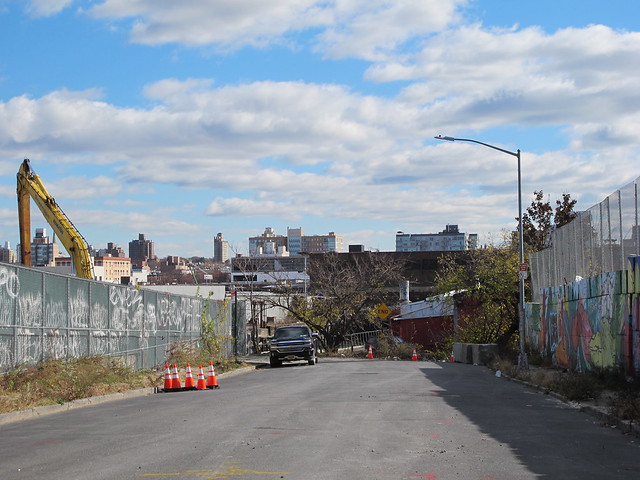
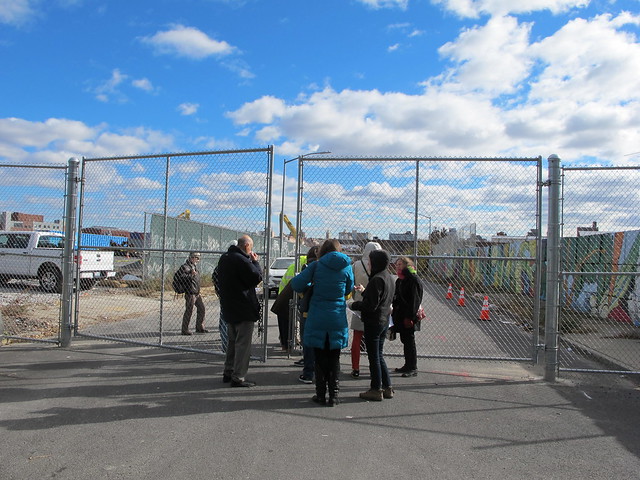
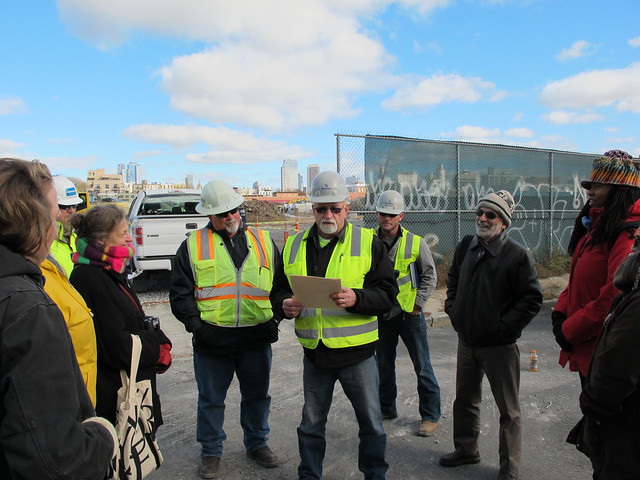
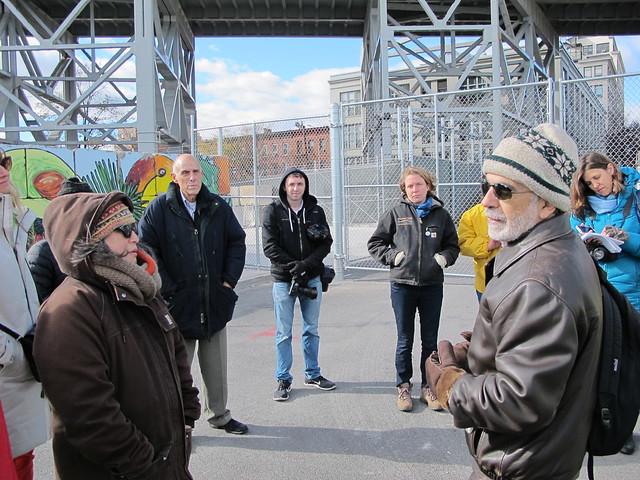
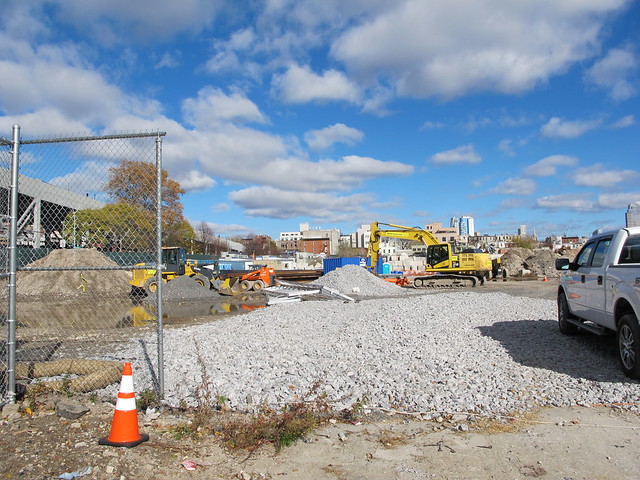
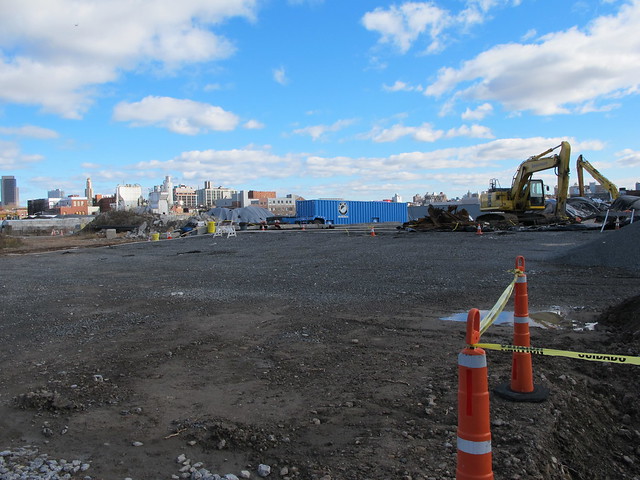
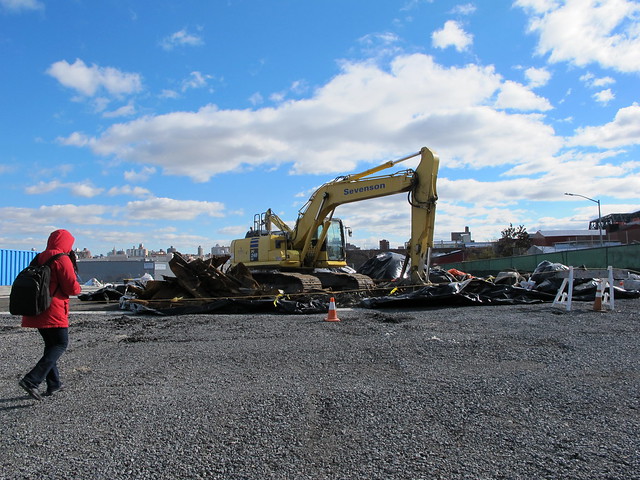
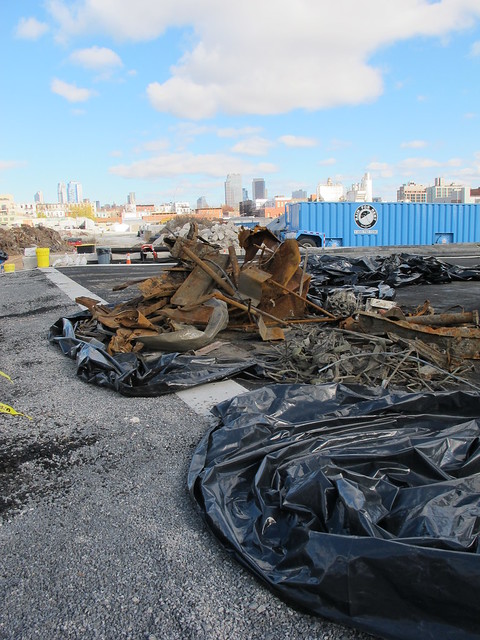



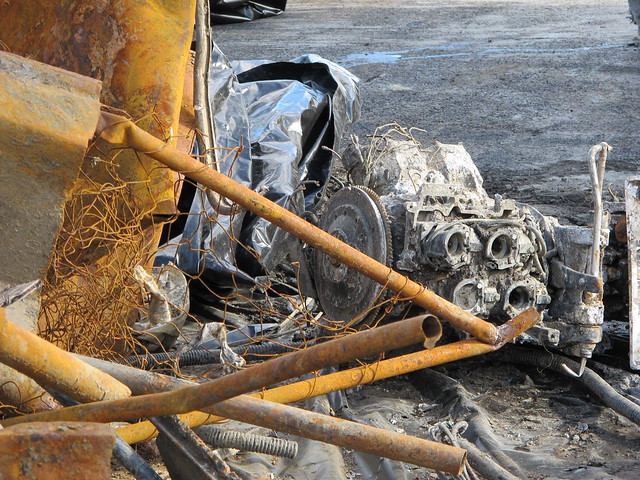
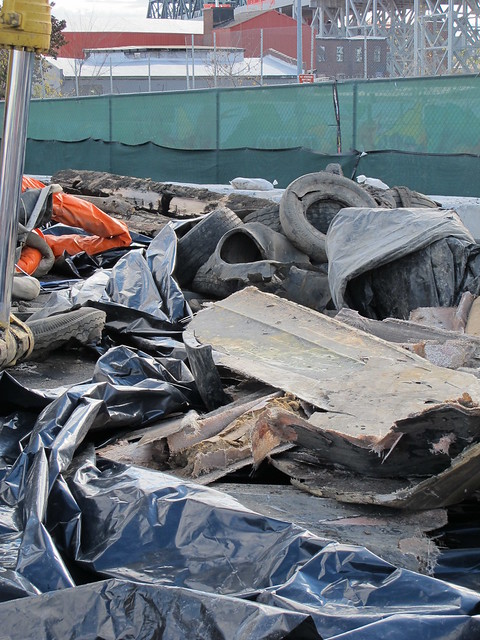

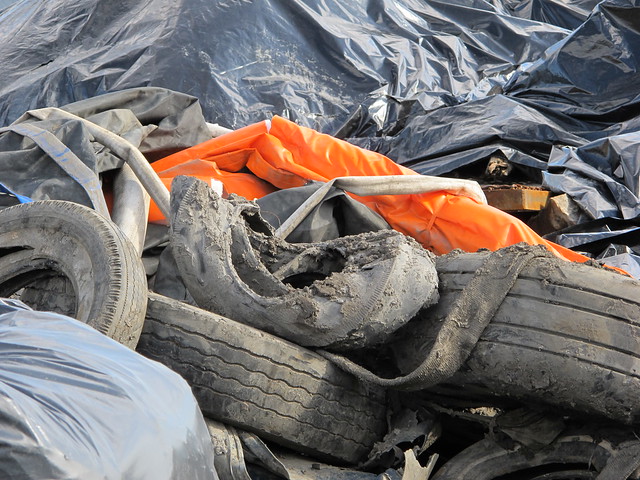
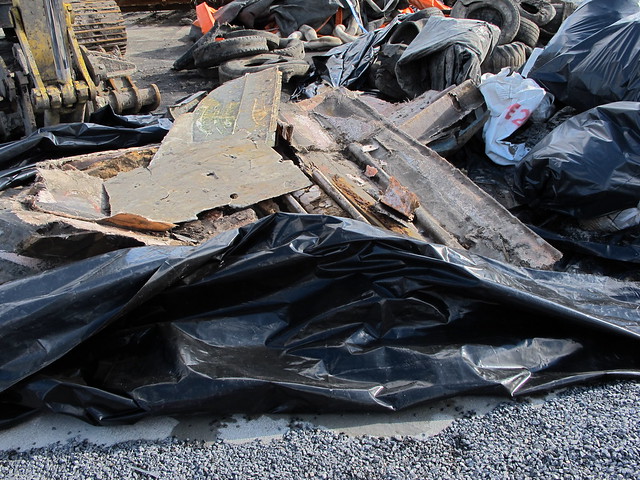
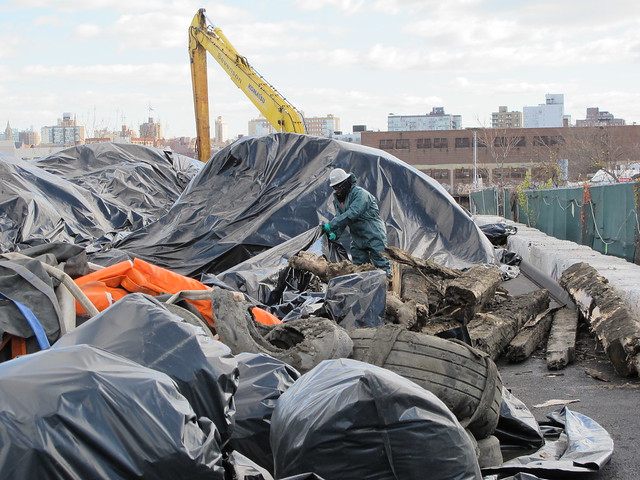
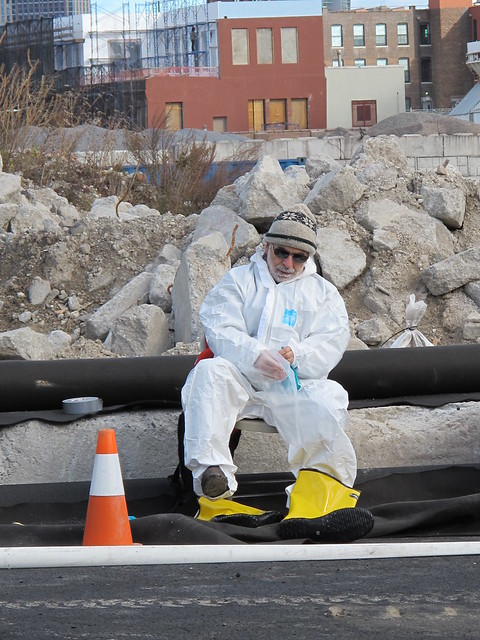






.JPG)

4 comments:
Katia
Any idea how long this gates you took a picture of will be up across Huntington Street? We lost a lot of parking because of them.
Peter, The fence looked rather well installed, so I can imagine that it will stay up for a while, especially since the site still needs to be remediated. Will ask EPA tomorrow at the Community Advisory Board meeting.
I did ask EPA the question regarding the parking last night, Peter. They confirmed that this stretch of Huntington Street between Smith Street and the canal will continue to be fenced off for the next few months. The Public Place site and the street end are being used as a staging area while the 5th Street Basin study, which will include dredging of toxic material, is taking place.
Thanks so much for asking Katia. That's unfortunate, as it is a loss of probably 15 more parking spaces.
Post a Comment